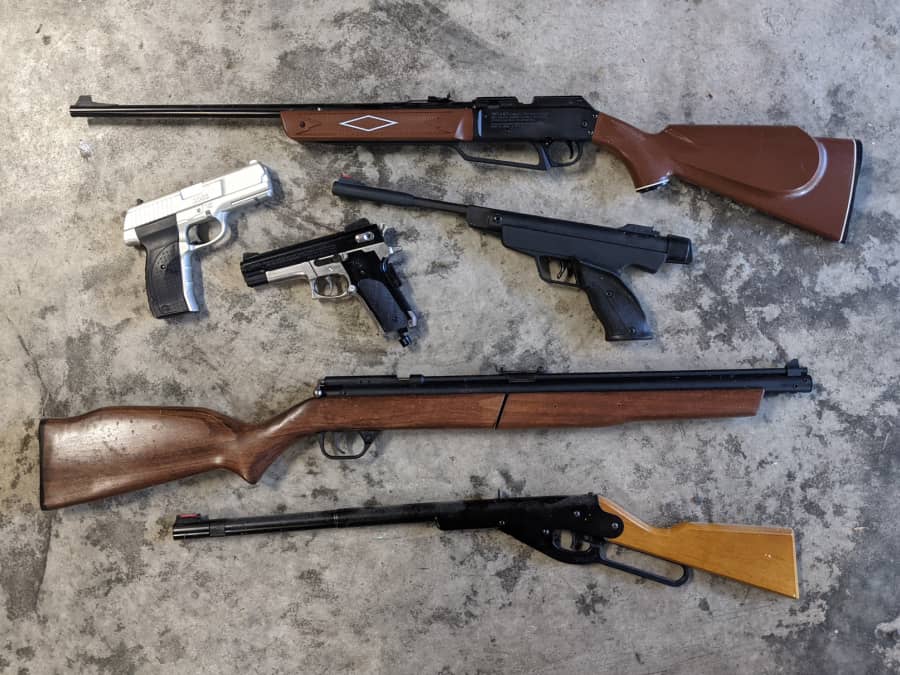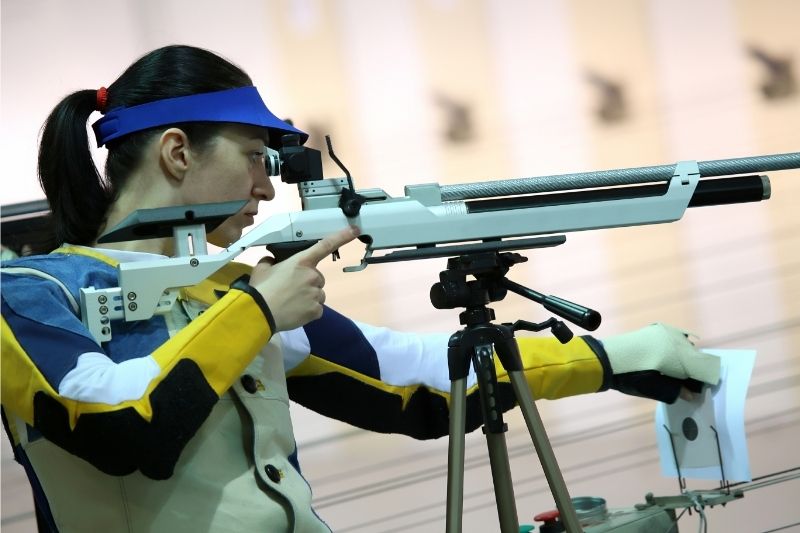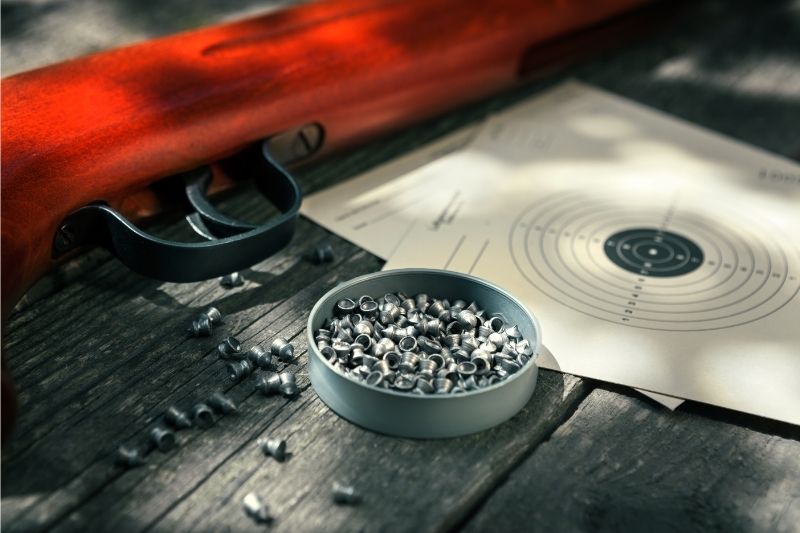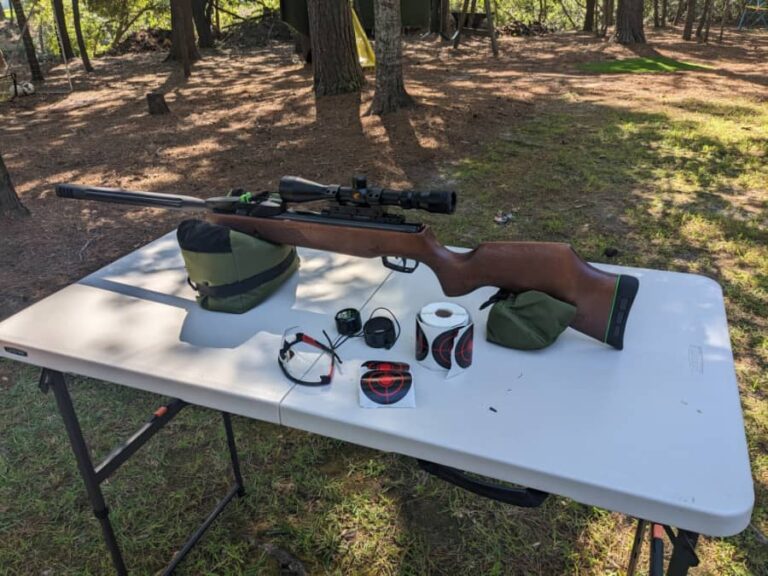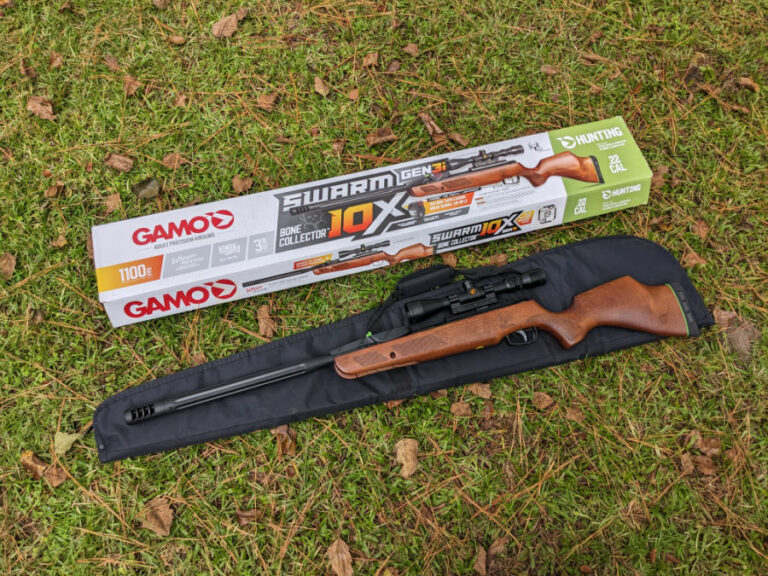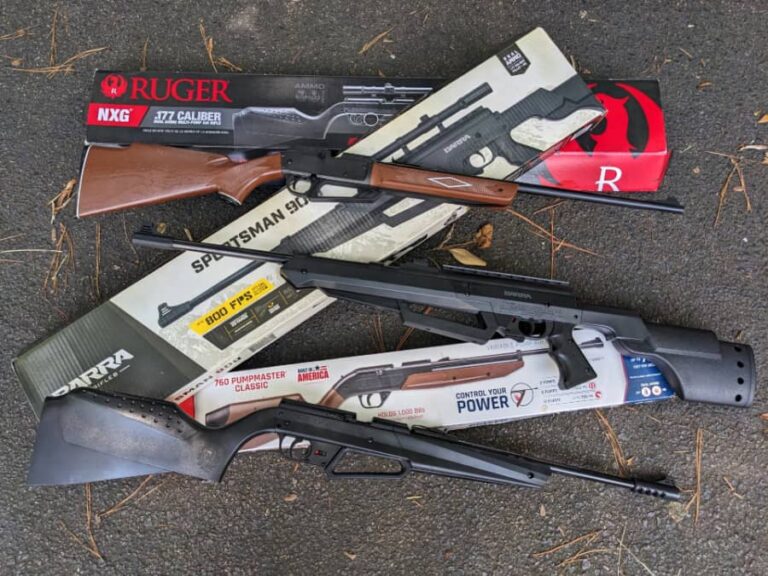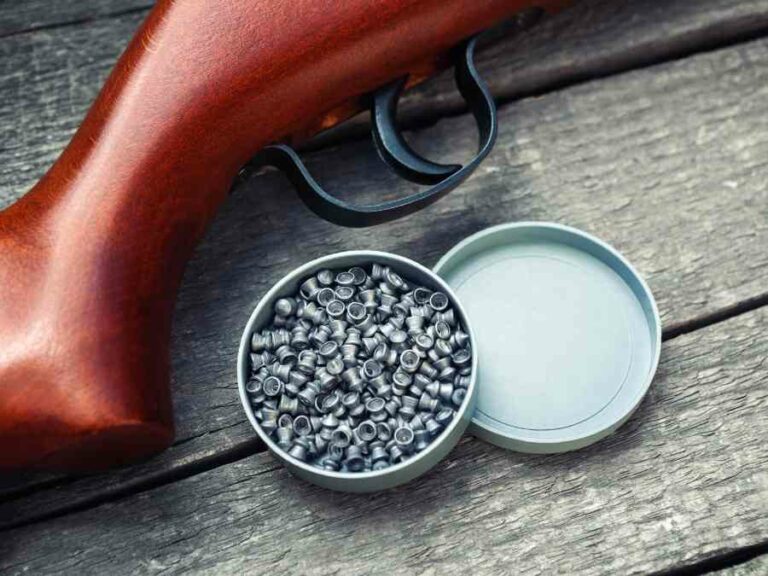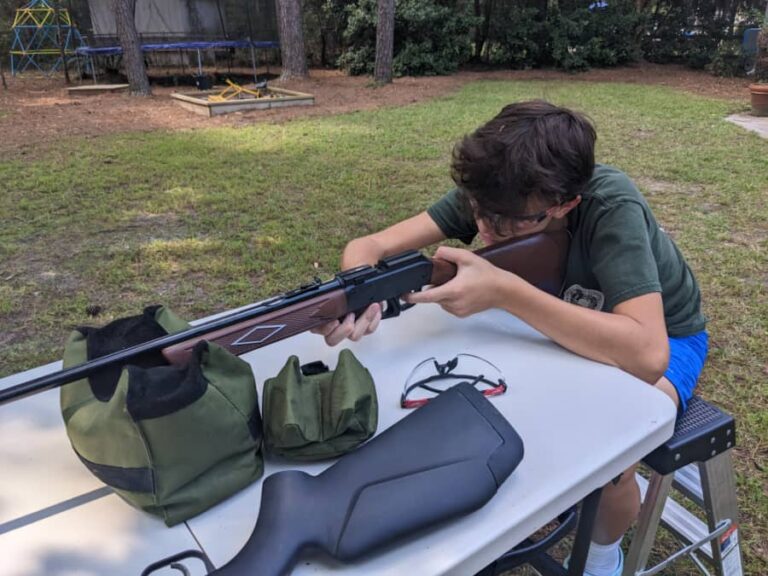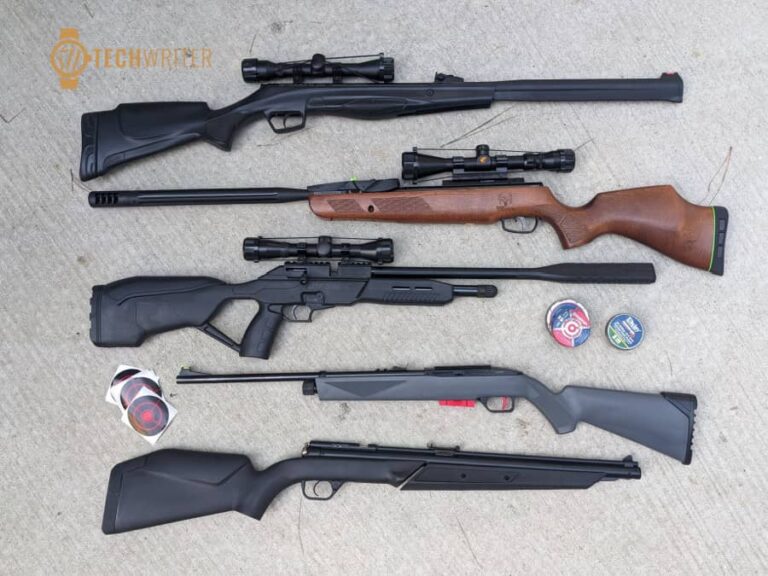What Is An Air Rifle?
Have you heard of an air rifle? And thought of a BB gun like the Daisy Red Ryder? Don’t believe all the hype about shooting your eye out—there’s plenty of value in an air rifle. This is especially true if you’re looking for a bug-out solution that doesn’t require a whole lot of paperwork.
An air rifle gets its power from a dedicated air supply and shoots lead projectiles of various calibers and shapes. The compressed air pushes the projectile out of the muzzle at speed, without the need for powder or spark. Though they may resemble true firearms, air rifles have only a small percentage of the velocity of powder burners.
If you’d like to learn more about air rifles, we’ve put together a complete guide on the subject.
From the origins of the air rifle to the various types of air rifles available, this guide will get you started with learning about how air rifles can benefit you and your family.
Before we get too ahead of ourselves, let’s start at the very beginning.
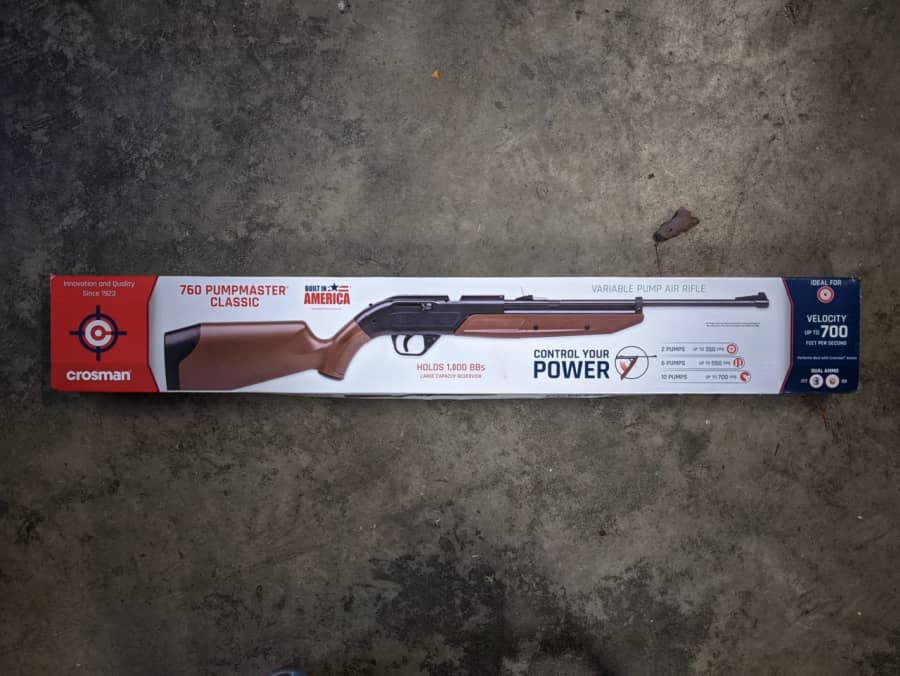
History of Air Rifles
The history of airguns, much like the history of firearms in general, isn’t so much the single-handed efforts of one man (or woman), but a series of inventions and improvements that eventually grew into what we know of and consider them to be today.
In so many words, to simplify the history of airguns requires a bit of fast-forwarding through history.
We often see and hear of poisoned blow gun darts when it comes to primitive man. The concept of pushing a projectile simply with a burst of air is where the concept of an airgun finds its origins. That’s the simplest part of the whole design, but also the most crucial.
From blowguns to rifles that actually shot with compressed air, the idea of using bursts of air to shoot something out of a barrel fueled the air rifle to continuously evolve with technology. Lewis and Clark famously carried a Girardoni pre-charged pneumatic (PCP), which shot round balls. Today’s air rifles, however, are anything but primitive.
We’ll talk more about what a PCP is compared to other types of air rifles in a few sections, but suffice it to say air rifles have continued to evolve from a simple tube you breathe into, to rifles and even break-barrels that propel lead projectiles across large distances with more speed than you might think.
In fact, modern air rifles are now being granted the privilege of legally taking game animals in many states. Air rifles are no longer a simple pastime but an entire industry waiting for newcomers to enjoy a sport many often overlook.
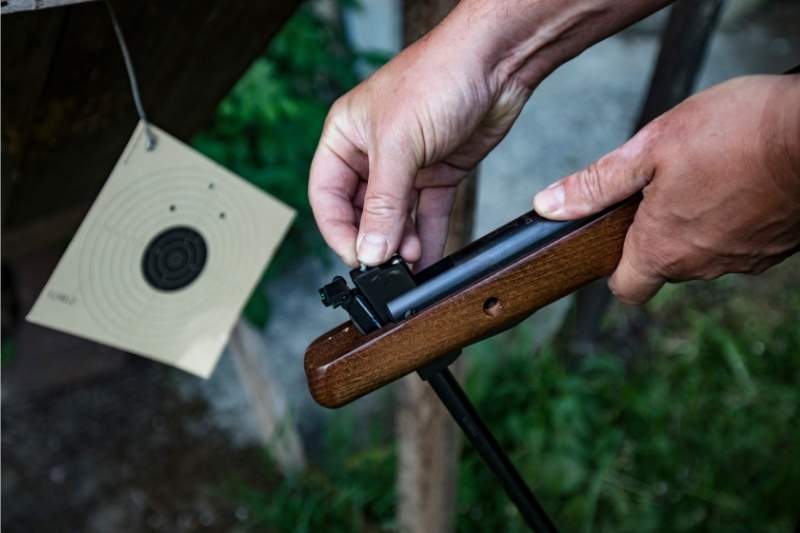
How Does an Air Rifle Work?
To put it simply, an air rifle works by using compressed air to propel a lead projectile out of the muzzle at speed. The air must have enough force behind the projectile in order to not only move it through the barrel, but out the muzzle and into the intended target.
More specifically, there are various technical aspects to the intricate workings of an air rifle. The basic features of a typical rifle (such as the breech, trigger, barrel, stock, and sights) all work the same with an air gun. Instead of an explosion within the gun, however, there’s an incredibly powerful burst of air that gets the job done.
There are many ways to obtain this burst of air, each depending on the type of air rifle platform they’re built upon. These different types of air rifles are explained in further detail below.
Basic Types of Air Rifles
Air rifles come in all kinds of shapes and sizes, but there are a few common types of air rifles that you’ll come across. Understanding the differences between these types can help you choose the right platform for you depending on your individual situation.
Pre-Charged Pneumatic (PCP)
In a pre-charged pneumatic (PCP) air rifle, the air is already compressed from the fill source, and the gun reservoir is filled with high-pressure air to be stored on-board. Most fill pressures are 3,000-4,500 pounds per square inch (PSI) (seriously high pressure). This rating simply tells us how much air pressure is within that particular space. A higher PSI translates to more force (more pounds per square inch).
From the reservoir, the air travels through the valve and into the barrel only when the trigger is pulled. Like a firearm, the trigger releases the hammer, which strikes the valve in order to manually open it. Once the valve is opened, air rushes through the holes in the valve body itself to fill the breech and push the projectile out the barrel. PCP airguns are often regulated, and this provides peak efficiency and power, while providing fantastic accuracy in most cases.
Because these types of airguns typically have fill pressures of 3,000 PSI to 4,500 PSI, they require a special high-pressure air compressor (no, your shop compressor won’t cut it) or scuba tank to fill. They can be more costly than other platforms to get into.
Pump Action
If you’re looking for an air rifle you can shoot with your kids, a pump action platform is probably the best choice. This type of air rifle requires you to pump the air into the gun by opening and closing a valve. These air rifles can take anywhere from 5-10 pumps in order to store up a full charge.
While pump action air guns are simple, they aren’t necessarily the best for hunting. You’re not likely to be able (or have time) to quickly pump up your gun for a follow-up shot on smaller game. All the same, they are a great learning tool for many folks.
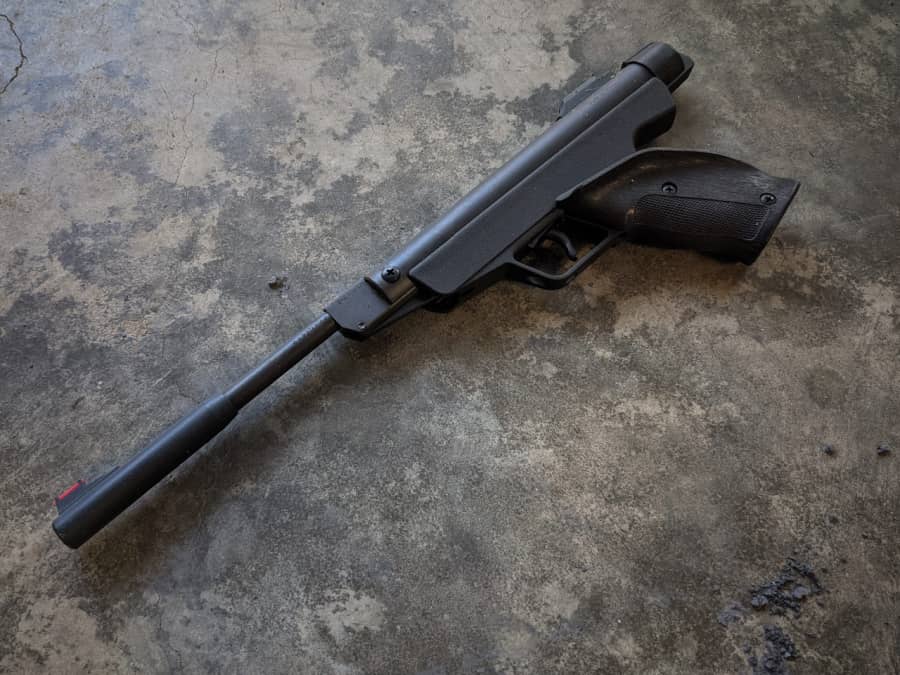
Spring Piston/Nitro Piston
Spring air rifles are on a whole different level. Rather than having to continuously pump the rifle, all you have to do is cock it once. This sets the piston and gets you ready to fire. The upside in a prepping/survival scenario is that they require no external air source, and are fairly quick to actuate for follow-up shots. Having a nitrogen-filled air spring in some models gives the
gun better consistency, and makes it a bit less “twangy.”
Don’t think that trading many pumps for one is an easier task. Spring air rifles can often be harder to cock for some individuals. That’s not to mention the twang you’ll hear after you shoot the rifle, which is the spring rebounding within the stock after the piston drops. But they do offer a higher power level, and are more budget friendly for the novice shooter.
Many air rifle enthusiasts appreciate the concept of a “springer” air rifle, but the sound effects and effort required to operate this type of air rifle make it less popular than other types.
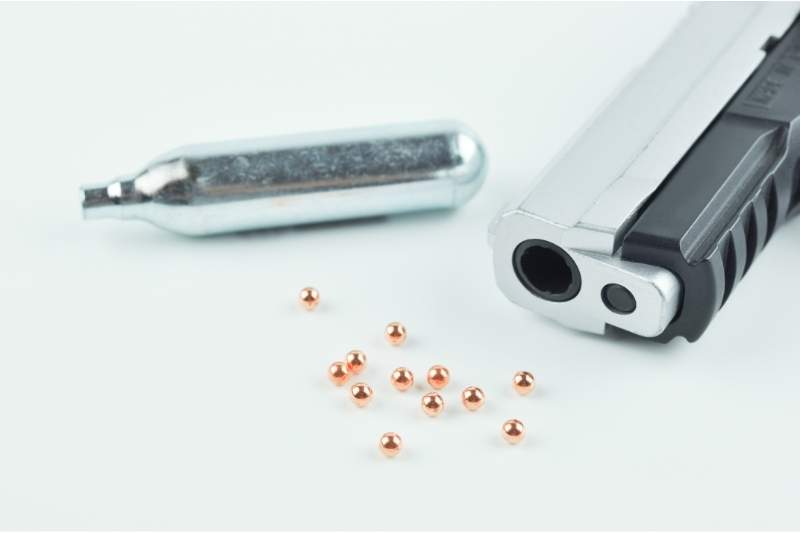
Carbon Dioxide (CO2)
If you’re looking for a middle ground between pumping up your gun all day and operating air compressors to fill the gun to high pressures, a CO2 air rifle is your best bet.
CO2 air rifles use a CO2 cartridge that, once punctured, provides the compressed air necessary to fuel the rifle. While you are limited in terms of shot count, you won’t get the same twang as you would with a springer. In many ways, both the PCP and CO2 airguns resemble firearms the most in terms of gun behavior while shooting. There are many different types of CO2 guns on the market, from realistic full-auto firearm replica trainers to dedicated arrow-shooting guns.
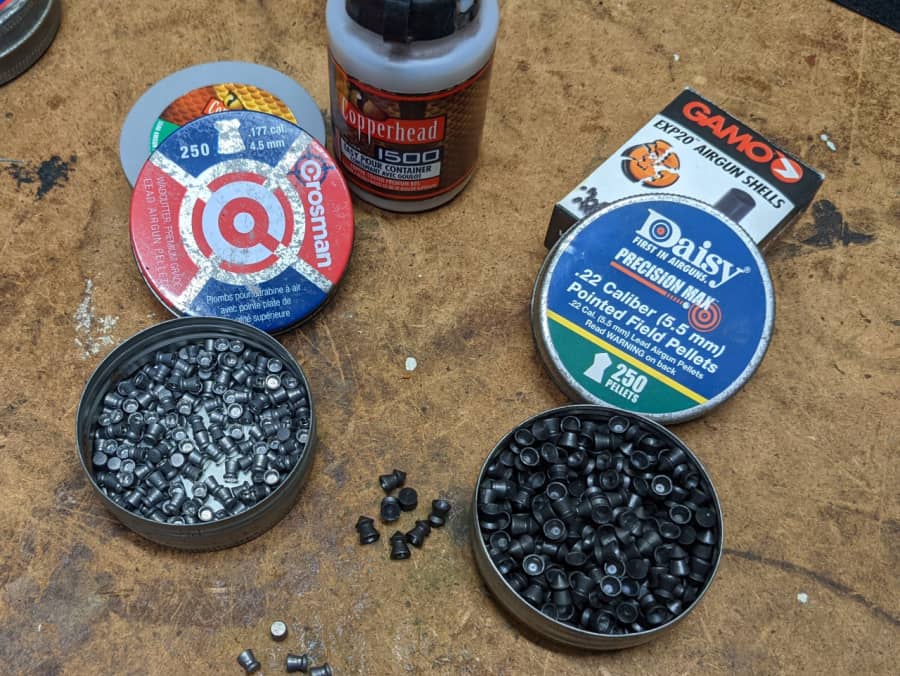
Air Rifle Ammunition
We’ve talked a lot about the types of airguns, each time mentioning a “lead projectile.” This term simply refers to the object, or “bullet” if you will, that shoots out of the muzzle. Made from lead in order to be lightweight yet effective, the lead projectiles can be purchased in a number of calibers, weights, and shapes.
For instance, you’ll commonly see calibers such as .177, .22, .30, and .50. There are other calibers out there as well, mainly for custom airguns that shoot a specific caliber, weight, and/or shape. Projectiles can either be round like a bullet (slug) or cut out at the base (pellet).
Pellets are the most common type of ammo you’ll see on the market. These projectiles work well because the hollow base allows them to expand in the chamber as the air opens up the base, or “skirt.” This allows for a tighter seal in the barrel, which means more air gets behind that pellet as it flies.
Slugs, on the other hand, work well if you’re going for maximum power and need a longer-range solution. That’s a discussion we’ll pick up in our section regarding hunting, but it’s important to know. Slugs have a solid body that comes to a point. They may not fly as fast as pellets do, but they sure do pack a punch and offer a better ballistic coefficient (BC). Typically, they are only used in PCP airguns, as they require more power in most cases.
Most importantly, you’ll also need to pay attention to the weight of the projectiles. Weight is most often measured in grains, like powder. Pellets can weigh in the single or double digits, while slugs often have a bit more meat to them.
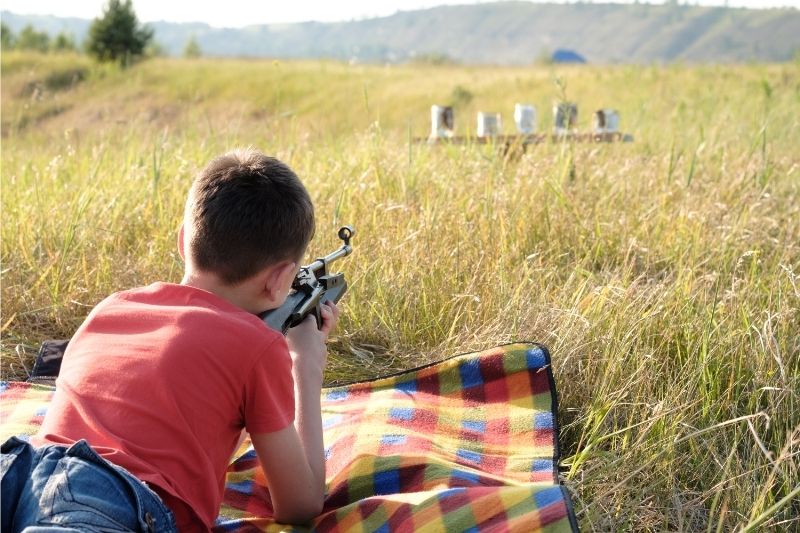
Hunting with an Air Rifle
Certain states have recently legalized airguns for hunting and more continue to do so with each passing year. If you’d like to learn more about which states offer airgun hunting, check out Pyramyd Air’s interactive map on the subject. You can either search by state or for specific game.
Starting out small, many air rifle enthusiasts pick up a small game license in order to shoot pest animals such as prairie dogs, iguanas, birds, squirrels, and rabbits. Calibers such as .177 and .22 work well for these types of small animals, but it’s more about the knock-down power than the caliber.
When we say “knock-down power,” we’re talking about the foot pounds of energy, or FPE, of a specific bullet. Airgun Depot has a great set of calculators that allows you to calculate the FPE of a particular projectile based on the pellet weight and velocity. For example, a pellet weighing 20 grains with a velocity of 500 feet-per-second (FPS) has an FPE of 11.11.
Some states may define the FPE required to harvest an animal humanely, so it’s good to know the specific range of power you’ll need for your air rifle to not only be accurate but also effective for hunting use. After all, not dispatching your target with a powerful-enough shot could end in disaster and is simply not ethical.
Many air rifle hunters use slugs in order to take down their prey. These projectiles offer the most punch because they are built for force, rather than speed. Slugs also fly a bit straighter since they’re a large surface area for any wind to influence. As you may have guessed, you will need to shoot game closer with an air rifle than you would with a firearm, but that’s not to say airguns are limited to 100 yards or less.
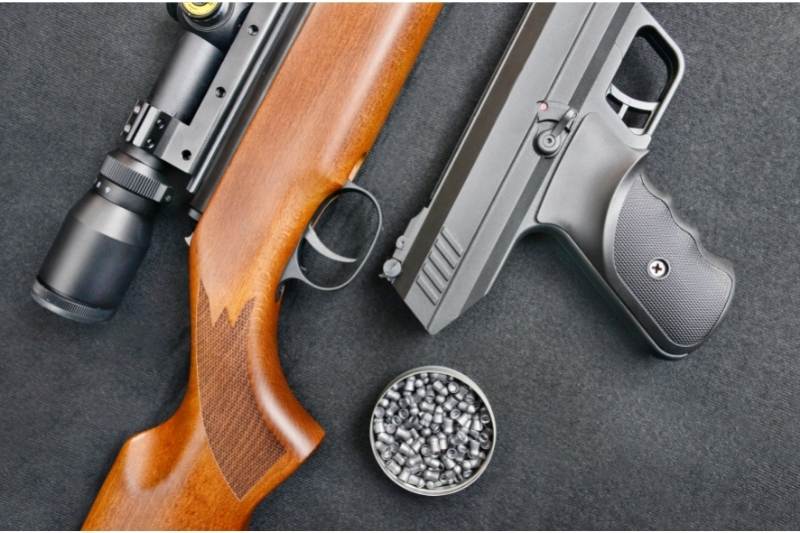
Air Rifle FAQs
Here are answers to some of the most common questions surrounding air rifles. While they are meant to be informative, they are not to be construed as legal advice. Always check your local laws to make sure you are abiding by them.
How far can an air rifle shoot?
The answer to this question changes with the specific air rifle you shoot. Some air rifles are best for up-close shooting, a distance you might choose if you were shooting a powder-burning pistol. However, there are air rifles that will make a few hundred-yard shots with the right scope—and more importantly, the right shooter.
Do I need a license to own an air rifle?
Yes and no. While federal law does not prohibit the ownership of an air rifle, local laws may differ depending on the type of airgun/caliber/power rating.
Some states, counties, and/or cities require you to have a permit or license in order to own an air rifle, as they consider some airguns to be a firearm by definition. Other states have no laws against air rifles. If you’re not sure about what your local air rifle laws are, research them before making a purchase.
Can a felon own an air rifle?
The short answer to this question is yes, but the long answer is more complicated.
Some states consider air rifles to be classified as firearms. This can depend on the velocity of the projectile as it exits the muzzle and/or the caliber. Since felons cannot own firearms, they cannot own an air rifle in jurisdictions that choose to classify air rifles as firearms.
There are certain states, however, that do require you to carry a license/permit if you own an air rifle. This applies to anyone who wants to own an air rifle, not just felons.
For more information on what’s restricted and what’s not, check out Pyramyd Air’s shipping restrictions by location. You should also check your local county, city, and state laws to see what restrictions may apply.
What are the benefits of owning an air rifle?
Air rifles can be great tools for a variety of situations. Many pro shooters use air rifles to practice their shooting in a less-expensive way. After all, it’s often much easier to find and purchase lead projectiles than live firearm ammunition.
Beyond that, shooting air rifles can actually help hone your general shooting skills. Trigger discipline and many other fundamentals apply to air rifles as much as they do to firearms. In fact, it takes arguably more effort to become a skilled airgun shooter because the projectile weighs less and isn’t moving as fast as a bullet.
Replica air rifles that are shaped to look like the real thing can also be a huge benefit to training for everyday carry. You might not have the sheer firepower of a true firearm if you want to survive with an air rifle, but it’s much more effective than a knife. Whether it’s to fend off predators or bring down dinner, an air rifle has a lot of uses for many situations.
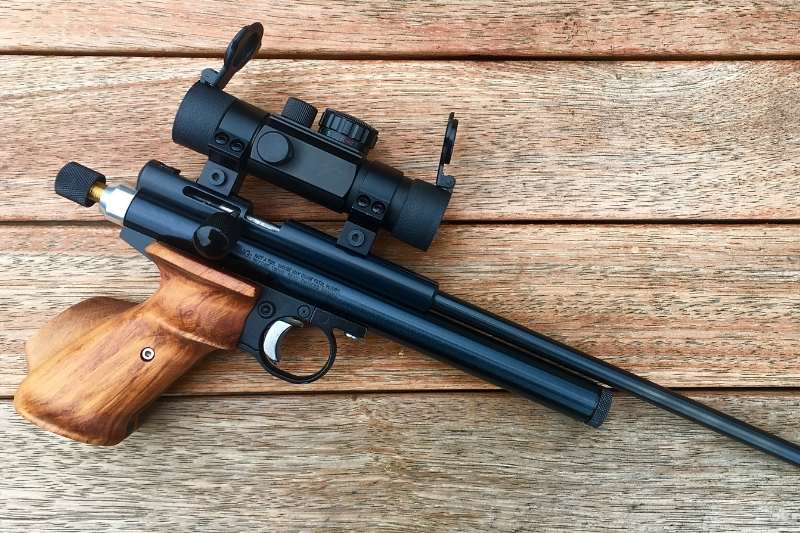
Lead is in the Air (Rifle)
We hope this article has helped you to not only learn more about air rifles, but gain an interest in them as well. Air rifles are a great alternative to firearms that can still bring the best of getting behind a scope and plinking away at targets. Even if you’re not a pro shooter, you can still have fun with air rifles.
Looking for more everyday carry tips? Check out our blog for new articles on topics you’ll enjoy and use in your everyday life.

Blair Witkowski is an avid watch nut, loves pocket knives and flashlights, and when he is not trying to be a good dad to his nine kids, you will find him running or posting pics on Instagram. Besides writing articles for Tech Writer EDC he is also the founder of Lowcountry Style & Living. In addition to writing, he is focused on improving his client’s websites for his other passion, Search Engine Optimization. His wife Jennifer and he live in coastal South Carolina.

